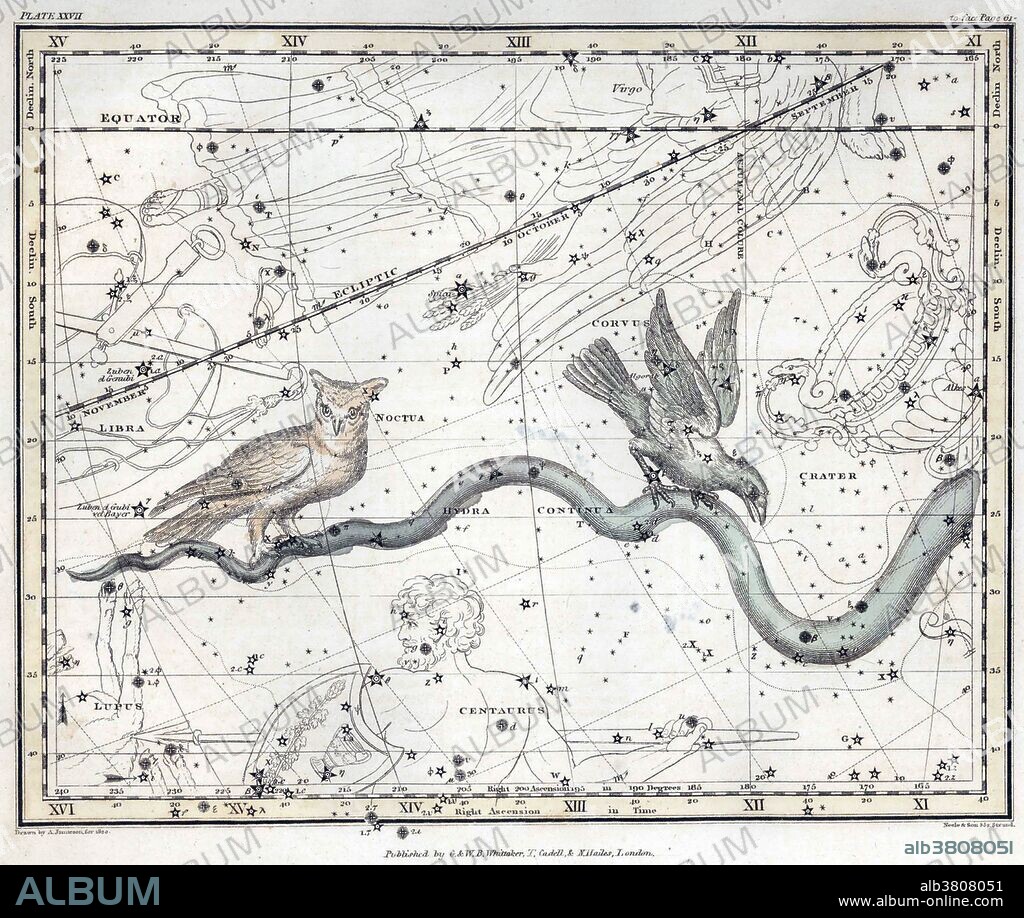alb3808051
Corvus and Noctua Constellations, 1822

|
Añadir a otro lightbox |
|
Añadir a otro lightbox |



¿Ya tienes cuenta? Iniciar sesión
¿No tienes cuenta? Regístrate
Compra esta imagen.
Selecciona el uso:

Título:
Corvus and Noctua Constellations, 1822
Descripción:
Ver traducción automática
Corvus is a small constellation in the southern sky. Its name is Latin for raven or crow. It includes only 11 stars visible to the naked eye. It was one of the 48 constellations listed by Ptolemy, who only counted 7 stars, and it remains one of the 88 modern constellations. Noctua, Latin for little owl, was a seldom mentioned constellation that was once placed between the end of the tail of Hydra, the sea-serpent and Libra. The origins of the constellation are unknown, It is now obsolete. Both are depicted as resting on the tail of Hydra. Hydra is the largest of the 88 modern constellations, measuring 1303 square degrees. Also one of the longest at over 100 degrees. A Celestial Atlas (1822) by Alexander Jamieson, inspired by the star atlas of Johann Elert Bode, but restricted itself to stars that could be seen with the naked eye. Comprising a systematic display of the heavens in a series of thirty maps illustrated by scientific description of their contents and accompanied by catalogues of the stars and astronomical exercises, plate 27, 1822.
Crédito:
Album / Science Source / U.S. Naval Observatory Library
Autorizaciones:
Modelo: No - Propiedad: No
¿Preguntas relacionadas con los derechos?
¿Preguntas relacionadas con los derechos?
Tamaño imagen:
3600 x 3040 px | 31.3 MB
Tamaño impresión:
30.5 x 25.7 cm | 12.0 x 10.1 in (300 dpi)
Palabras clave:
ARTE • ASTRONOMIA • ASTRONÓMICO • CELESTE • CELESTIAL SPHERE • CELESTIAL • CIENCIA • CORVUS • CUERPO CELESTE • DIBUJO • ESFERA CELESTE • FAMOSA • FAMOSO • GRABADO • HISTORIA • HISTORICO • ILUSTRACION • IMPORTANTE • MOCHUELO • OBRA DE ARTE • SIGLO XIX
 Pinterest
Pinterest Twitter
Twitter Facebook
Facebook Copiar enlace
Copiar enlace Email
Email
